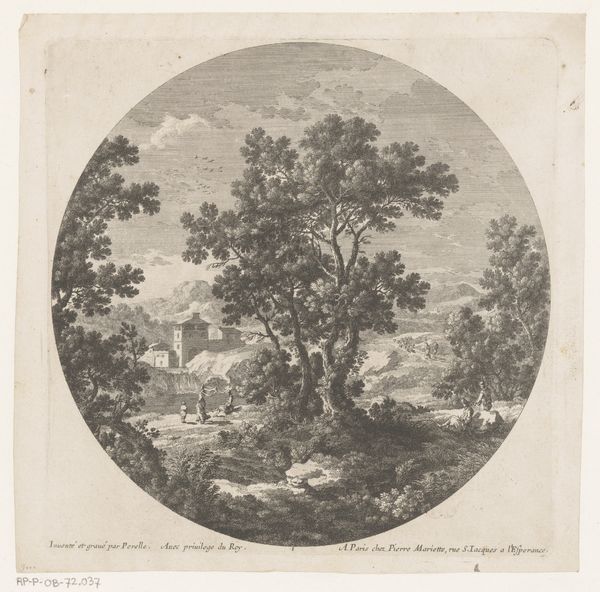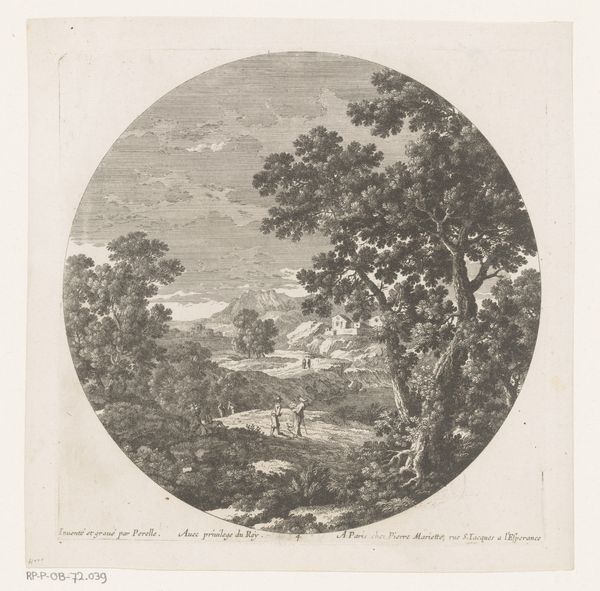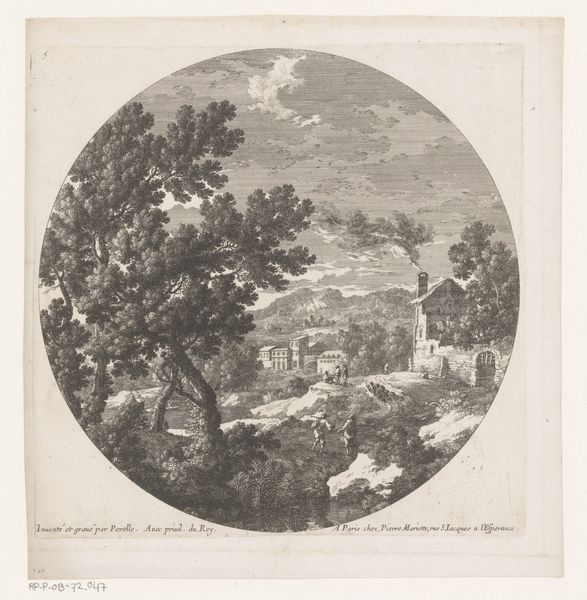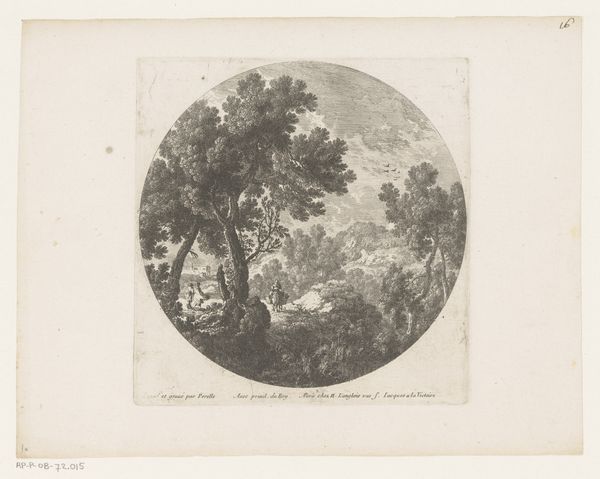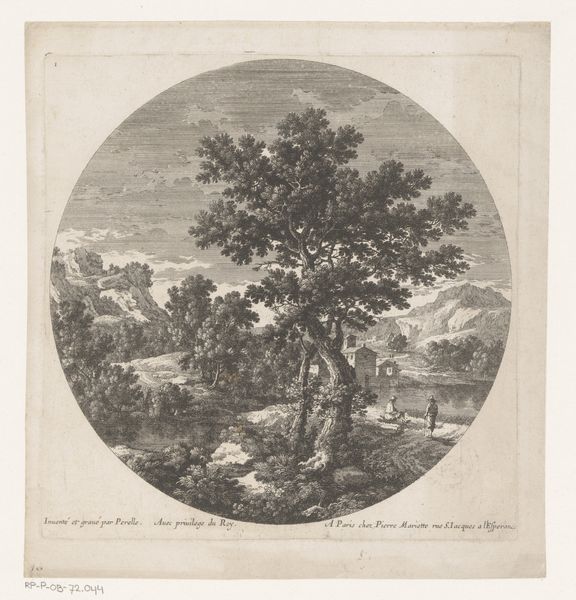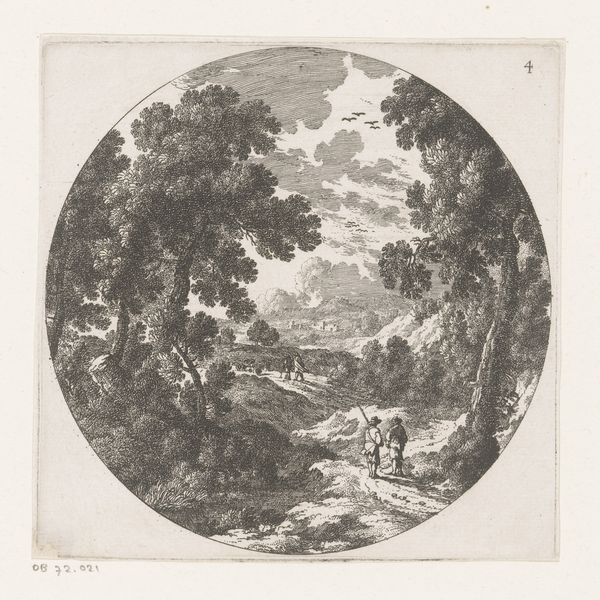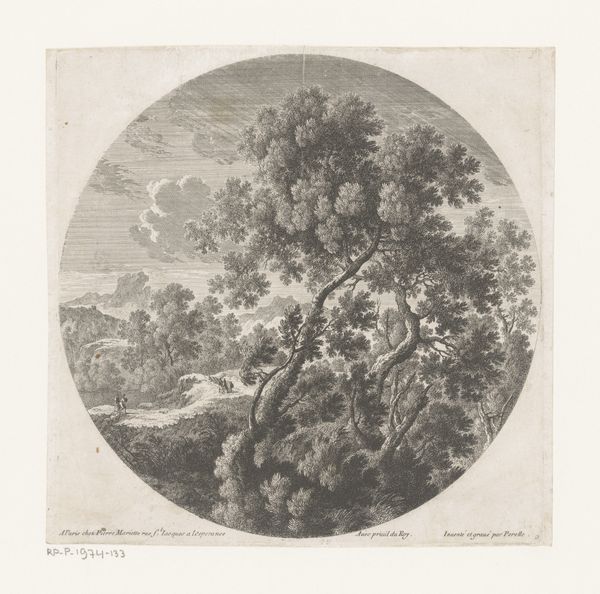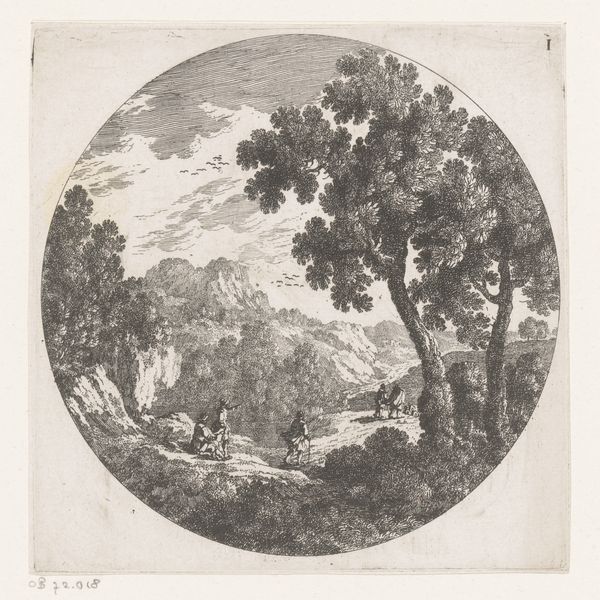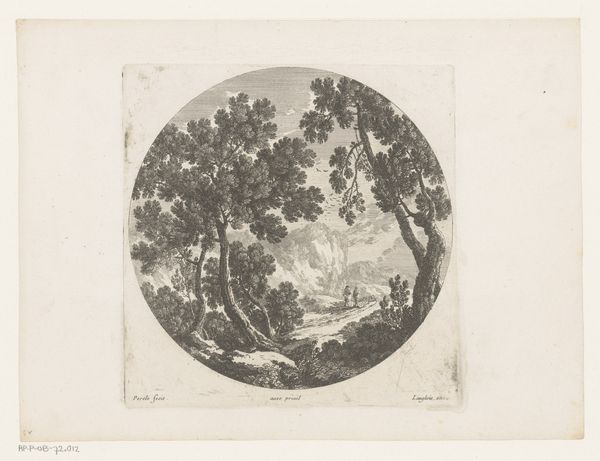
print, engraving
#
baroque
# print
#
old engraving style
#
landscape
#
river
#
line
#
engraving
Dimensions: height 211 mm, width 211 mm
Copyright: Rijks Museum: Open Domain
Curator: Nicolas Perelle's "Landschap met herders langs een rivier," or "Landscape with Shepherds Along a River," created sometime between 1613 and 1657, is a captivating glimpse into the Baroque era. Editor: My first thought is that it's a peaceful, almost idyllic scene, rendered in a delicate and surprisingly detailed way, considering it's a print. There's a real sense of depth, even within the circular frame. Curator: The choice of engraving really lends itself to this sense of pastoral serenity. Consider the lines, so carefully etched to depict the trees, the river, and the distant mountains. It's a print, so dissemination of the image was very much a key aspect, wasn’t it? Editor: Absolutely. It speaks to a burgeoning market for landscape imagery during this period. These prints became accessible, offering a taste of idealized rural life to those in urban settings. There's a constructed nature to that 'natural' scene, as opposed to say what actually existed at the time. What's interesting to you as an iconographer? Curator: For me, the symbols are muted, but ever-present. Shepherds traditionally represent a connection to innocence and simpler virtues. The river symbolizes the passage of time or the flow of life, all rendered here in quite ordered linear design. The circular shape echoes classical traditions as well. Editor: That classicism might relate to broader societal anxieties. The period witnessed profound social and political upheavals across Europe, a longing for an imagined simpler past represented within. You see that pastoral life so elegantly drawn. There’s an argument here about the ideal state of civilisation itself and anxieties surrounding its fall. Curator: I find your read of anxiety persuasive and perceptive, especially considering that Baroque sensibilities tend toward ornamentation and flourish. What feels very interesting here is its restrained sensibility: its more tranquil depiction of life against that background. What is so interesting to consider are these broader paradoxes between order and exuberance, nature and society... Editor: Ultimately, this print demonstrates how seemingly simple images carry complex layers of cultural meaning. It asks us to reflect on not only the aesthetics of the Baroque era, but how prints functioned socially, how visual signs and cues acted within a world on the precipice of modernisation and what the emotional charge of these types of rural landscape engendered... Curator: Indeed, exploring that space, both created and inherited, opens up exciting questions about our continuing relationship to landscape and our past.
Comments
No comments
Be the first to comment and join the conversation on the ultimate creative platform.
